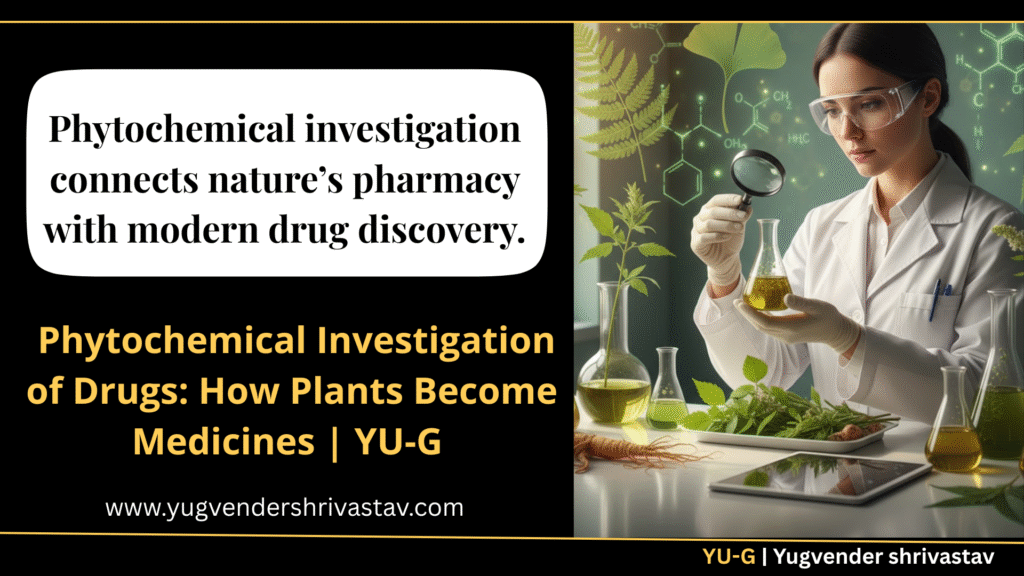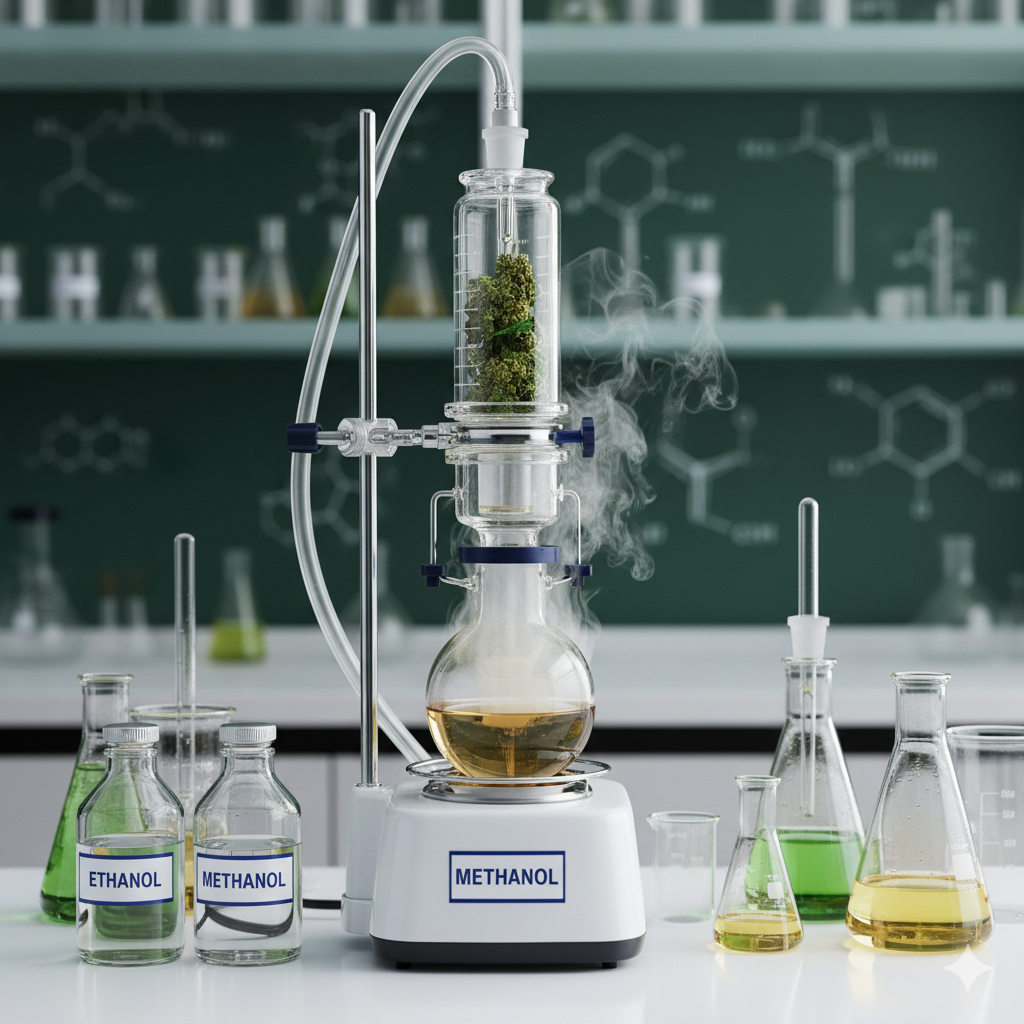
🌱 Introduction
Did you know that some of your common medicines were once hidden inside plants?
Aspirin came from willow bark, morphine from the opium poppy, and quinine from cinchona trees.
Welcome to the world of Phytochemical Investigation — where science meets nature to uncover the chemical magic behind plants. This study forms the foundation of pharmacognosy and is essential for drug discovery, standardization, and the development of safe, effective herbal medicines.
🌿 What Exactly Are Phytochemicals?
Phytochemicals are bioactive chemical compounds that plants produce to defend themselves — but for us, they’re treasure chests of therapeutic power 💊
Here are some major types of phytochemicals and what they do:
| Type | Example | Action |
|---|---|---|
| Alkaloids | Morphine, Quinine, Caffeine | Analgesic, Antimalarial, CNS stimulant |
| Flavonoids | Quercetin, Kaempferol | Antioxidant, Anti-inflammatory |
| Terpenoids | Menthol, Camphor | Antiseptic, Cooling agent |
| Glycosides | Digoxin | Cardiotonic |
| Phenols & Tannins | Catechin, Gallic acid | Antimicrobial, Antioxidant |
Each has its own chemical structure, solubility, and pharmacological role — making phytochemicals the real MVPs of nature’s pharmacy.
🔬 Step-by-Step: The Process of Phytochemical Investigation
1. Collection & Authentication
The first step is collecting the correct plant and confirming its species identity (no fake samples, please 😅). Botanists verify the plant using taxonomy or herbarium references.
2. Drying & Powdering
The collected material is shade-dried to preserve sensitive compounds, then finely powdered to increase surface area for extraction.
3. Extraction

This is where the real chemistry begins — isolating the compounds using solvents like ethanol, methanol, or chloroform.
Common extraction methods include:
- Maceration
- Percolation
- Soxhlet extraction
- Ultrasonic extraction
4. Preliminary Phytochemical Screening
Quick tests are performed to detect the presence of specific compounds:
- Dragendorff’s test → Alkaloids
- Shinoda test → Flavonoids
- Liebermann-Burchard test → Steroids
5. Quantitative Estimation
Now, scientists measure how much of each compound is present using spectrophotometric or chromatographic techniques.
6. Chromatographic Analysis
This step separates and identifies the compounds precisely.
Techniques:
- TLC (Thin Layer Chromatography)
- HPLC (High-Performance Liquid Chromatography)
- GC (Gas Chromatography)
7. Structure Elucidation
Finally, the compound’s structure is determined using:
- NMR (Nuclear Magnetic Resonance)
- IR (Infrared Spectroscopy)
- UV (Ultraviolet Spectroscopy)
- Mass Spectrometry (MS)
And voilà — a new phytochemical is identified, studied, and may even become a future drug.
💊 Why Phytochemical Investigation Matters
Here’s why this field is a core part of pharmacy and research:
- Drug Discovery:
Most modern drugs — from anticancer agents to antibiotics — started as plant compounds. - Standardization of Herbal Medicines:
Ensures quality, potency, and purity of herbal formulations. - Pharmacological Insights:
Helps in understanding how natural compounds act on human physiology. - Quality Control:
Prevents adulteration and ensures authenticity in crude drugs. - Sustainability & Innovation:
Promotes eco-friendly, plant-based alternatives to synthetic drugs.
🌻 Real-Life Examples of Phytochemical Drugs
| Plant | Phytochemical | Medicinal Use |
|---|---|---|
| Cinchona officinalis | Quinine | Antimalarial |
| Rauwolfia serpentina | Reserpine | Antihypertensive |
| Digitalis purpurea | Digitoxin | Heart stimulant |
| Curcuma longa | Curcumin | Anti-inflammatory |
| Papaver somniferum | Morphine | Analgesic |
Each of these discoveries began with careful phytochemical investigation — a perfect blend of curiosity and chemistry 🔍
⚗️ The Future of Phytochemical Research
The world is moving toward green chemistry and AI-based compound analysis. Future pharmacists and researchers (yes, that includes us 😎) will play a huge role in discovering new drugs from nature’s library — especially for conditions like cancer, diabetes, and neurodegenerative diseases.
🌿 Conclusion
Phytochemical investigation is more than a lab process — it’s an exploration of how nature hides life-saving molecules in plain sight.
It bridges traditional herbal knowledge with modern scientific proof, ensuring that the ancient wisdom of plants continues to heal the modern world.
So next time you sip on tulsi tea or use turmeric in food — remember, you’re tasting centuries of natural chemistry and pharmacological brilliance 🌿✨
Want to learn more about the science behind natural medicines?
Explore more articles on yugvendershrivastav.com and grow your pharma knowledge with YU-G.